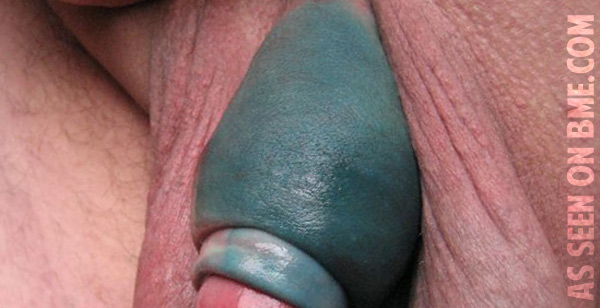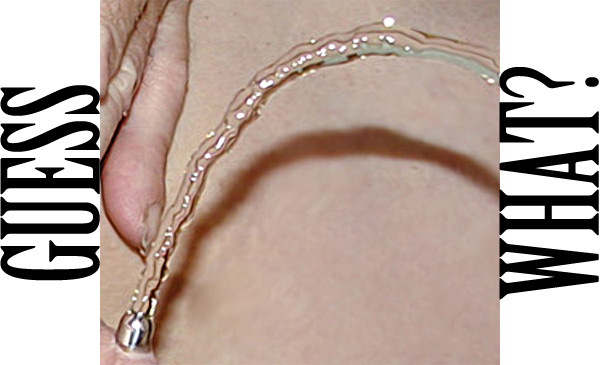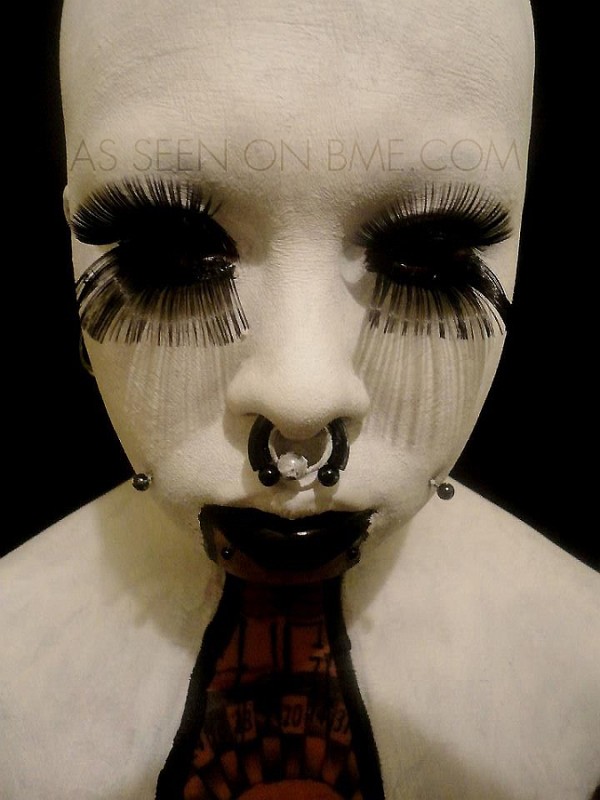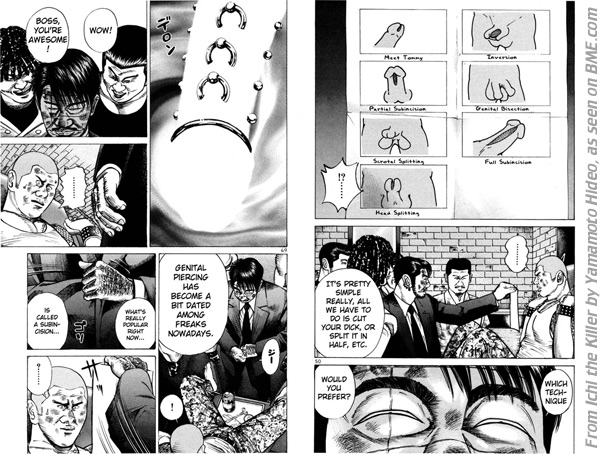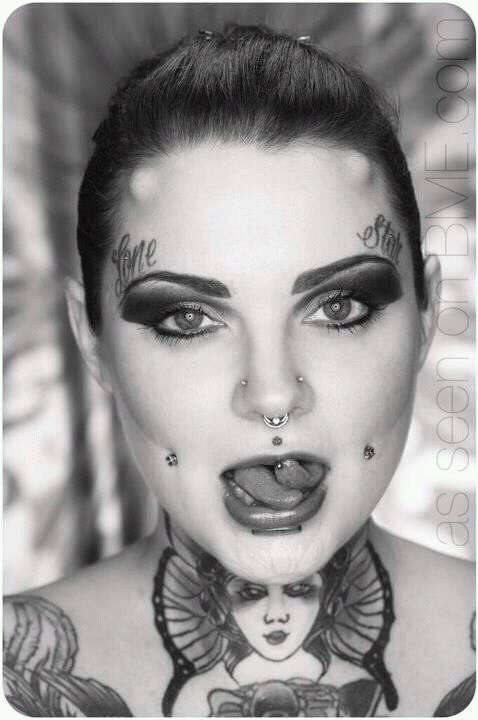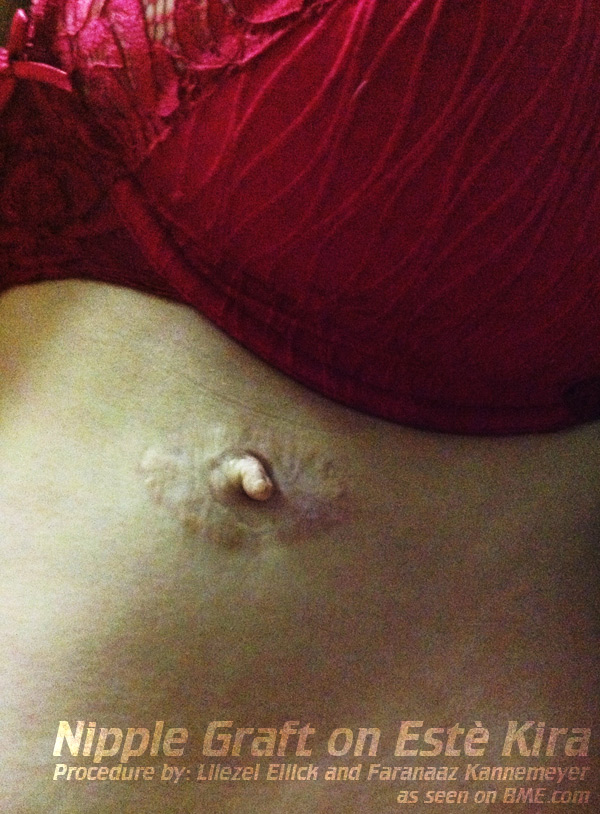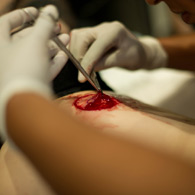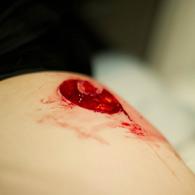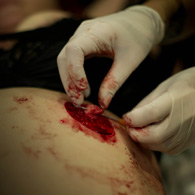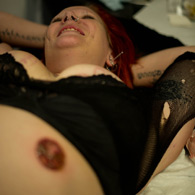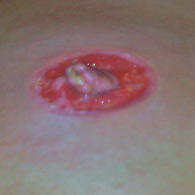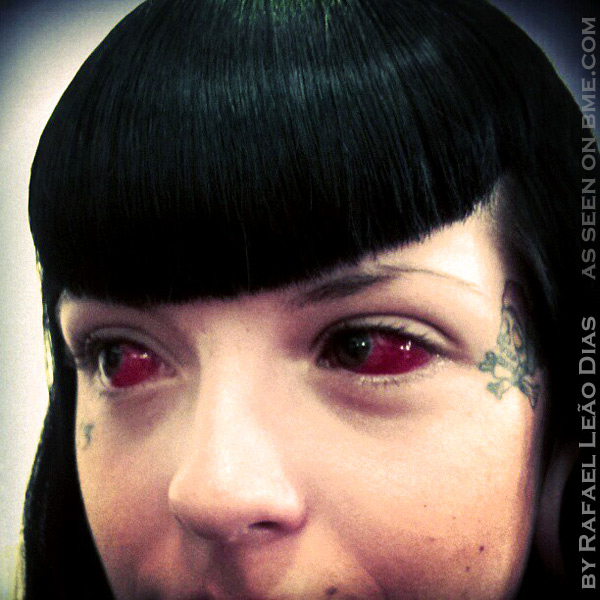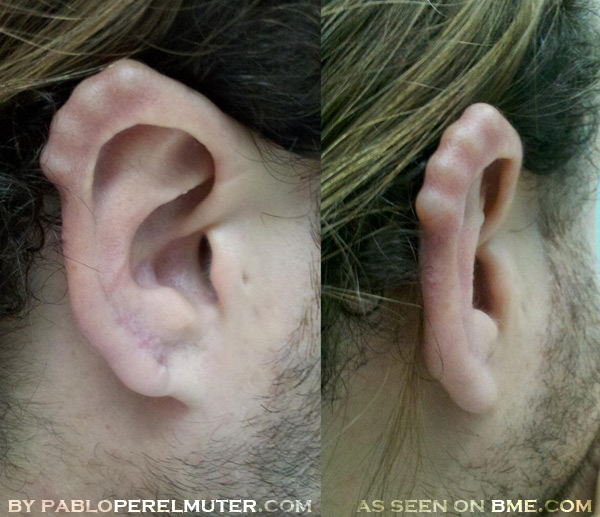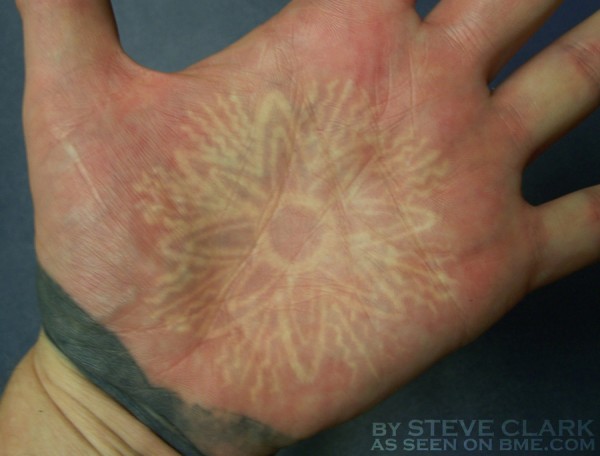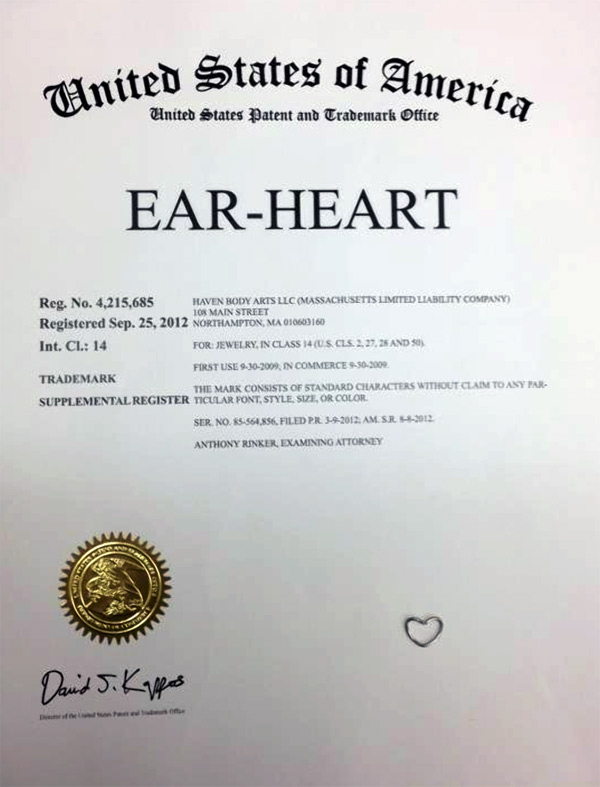As those of you who are BME members who’ve spent a lot of time exploring the saline injection galleries already know, one of the tricks that people figured out to make it more amusing is that you can add food colouring to the saline solution — and let me preemptively say that this is risky both because food colouring is not generally safe to inject, and because it compromises the sterile saline by adding a non-sterile component and thereby increases the risk of post-procedure infection. Anyway, when someone does this, it tints the inflated tissue quite evenly — the photo below shows it having been done in a penis. When the saline is absorbed by the body, is starts breaking down and removing the food colouring, and the tissue rapidly reverts to it’s normal tone.
Ever since seeing stained deep tissue from eyeball tattooing procedures (where the face becomes stained via ink leakage into subcutaneous tissue), I have been thinking that it’s likely that if instead of using food colouring one could use tattoo ink or India Ink — India Ink is generally more biocompatible and may be safer, but it’s a guess — to tint a large area all at once. Imagine being able for example to tattoo a penis solid black (or whatever) in a single relatively pain-free procedure. After all, we’re talking about a single pinprick rather than thousands. And of course saline isn’t just for wieners — we’ve all seen the so-called “bagelheads” where foreheads are inflated, but cheeks and lips and even the tongue can be done as well. Could one tint the face in a single pain-free procedure? What if different colors were added at different points? It’s quite likely that they would blend and combine in ways impossible to achieve with traditional tattooing. It’s also possible that because subcutaneous tissue is being tinted that appearance impossible to achieve with a tattoo machine could be done.
Of course it’s also possible that because of the way the ink is introduced, and the way the body needs to deal with it, that there are significant and perhaps even deadly side-effects. I do think this technique merits further exploration — and to the best of my knowledge this is the first serious proposal of this method — but I hope that if someone does go ahead with it, and not just research the risks, but they start on a very small scale to explore the results carefully. I have to admit I’m half tempted to try it myself. If I end up with a bright blue scrotum to match my eyes, I’ll be sure to let y’all know. Please let me know if you try it as well.
